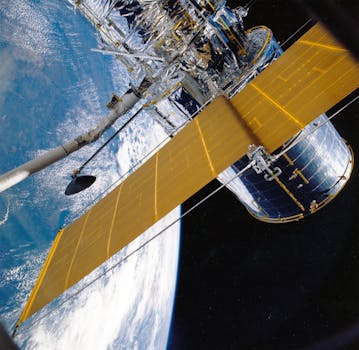GEO Satellites: Revolutionizing Global Communications with WordPress
GEO satellites, or Geostationary Earth Orbit satellites, are a type of satellite that orbits the Earth at an altitude of approximately 36,000 kilometers, remaining stationary relative to a fixed point on the planet. This unique characteristic allows GEO satellites to provide continuous coverage of a specific region, making them ideal for a wide range of applications, including global communications. With the help of WordPress, GEO satellites are now more accessible than ever, and their impact on global communications is being felt across the globe.
At the beginning of the GEO satellites era, the technology was mostly used for television broadcasting, but with the advancement of technology, GEO satellites are now being used for a variety of purposes, including telecommunications, weather forecasting, and navigation. The use of GEO satellites in global communications has revolutionized the way people connect with each other, enabling fast and reliable communication services, including voice, data, and video transmission.
How GEO Satellites Work
GEO satellites work by transmitting and receiving signals to and from Earth stations, which are specialized antennas that communicate with the satellite. The signals are transmitted to the satellite, which then amplifies and retransmits them back to Earth, allowing for communication between different regions. The satellites are equipped with transponders, which are responsible for receiving and retransmitting the signals. The transponders are connected to antennas, which transmit and receive the signals.
The signals transmitted by GEO satellites are received by Earth stations, which are typically equipped with large antennas. The signals are then processed and distributed to the intended recipients, such as television stations, internet service providers, or mobile phone networks. The use of GEO satellites in global communications has enabled the provision of a wide range of services, including broadband internet, mobile phone networks, and television broadcasting.
Applications of GEO Satellites
GEO satellites have a wide range of applications, including telecommunications, weather forecasting, navigation, and television broadcasting. In the field of telecommunications, GEO satellites are used to provide broadband internet services, mobile phone networks, and voice transmission services. They are also used for weather forecasting, providing images of the Earth’s surface and atmosphere, which are used to predict weather patterns and track storms.
In addition to these applications, GEO satellites are also used for navigation, providing location information and timing signals, which are used by GPS receivers to determine their location and time. The use of GEO satellites in navigation has revolutionized the way people navigate, enabling accurate and reliable location information, which is essential for a wide range of applications, including aviation, maritime, and land transportation.
Future of GEO Satellites
The future of GEO satellites is exciting, with new technologies and innovations being developed to improve their performance and capabilities. One of the most significant advancements is the development of high-throughput satellites, which are designed to provide faster and more reliable communication services. These satellites are equipped with advanced technologies, such as spot beams and frequency reuse, which enable them to provide higher bandwidth and faster data transmission rates.
In addition to these advancements, there is also a growing trend towards the use of smaller satellites, such as nano-satellites and micro-satellites, which are designed to provide more targeted and specialized services. These satellites are smaller and less expensive than traditional GEO satellites, making them more accessible to a wider range of users. The use of smaller satellites is expected to play a significant role in the future of GEO satellites, enabling more targeted and specialized services, and improving the overall efficiency and effectiveness of satellite communications.
